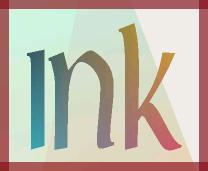|
November 2001
We haven't talked about scanners in a long time, so I thought I would revisit the issue under OS/2. The basics are simple, and have not really changed in the last year or so. First, you need device driver software to get OS/2 to actually use that scanner and capture the data -- without such software, forget it, your cheapie special scanner will not work with OS/2 period. So before you go out to Fry's and get the latest bargain bin special, you absolutely need to check out the only four sources for scanner drivers for OS/2:
If you can't find your scanner listed at one of these sources, the odds are 90% that you won't be able to get your scanner working with OS/2. Of course, if your scanner comes with Warp software floppies or CD, then forget this warning :-). Second, assume that you will not find USB support for OS/2. Now before you feel too bad about this fact, I can tell you that looking at the newsgroups and forums I find a whole lot of Windows users who have discovered the hard way that their operating system and USB aren't ready for prime time either - and these poor souls don't discover this until they have already bought the hardware and used the install floppies that they think will work. This even though most folks are able to use USB mostly. Actually, if anyone has gotten their USB scanner to work under OS/2, please let me know and I will be happy to share the information with everyone. Third. For parallel port scanners, you are on your own. Some folks have gotten some of these to work thru WinOS2, but most OS/2 companies don't provide any parallel support or dedicated drivers. If you think about it, these caveats make sense. The only business that is making any money with OS/2 scanner drivers is the one that is doing industrial strength apps for other business customers -- that means SCSI support for scanners that will handle high volume, not home consumer parallel/USB stuff. So your real best bet is to find a supported model or models, and then go to pricewatch.com or ebay or a show and find one of these scanners. Newness of model here is seriously less important than driver support; the #1 question I get about scanners is 'why won't my xxx scanner work under OS/2?' If you don't have a SCSI card by now, get one. You can pick up a PCI SCSI card from Tekram, SIIG or Adaptec for around $20/30 new, and any of them will be plenty fast for devices like scanners, zip drives, and the like. Also, any of these dedicated SCSI cards will work a lot better than those bundled 'sorta' proprietary SCSI cards that come with some scanners and are really not honest to golly SCSI cards. OK, this advice in hand, get any scanner you like, and don't worry about specs. For home use, anything that will do 300 DPI or better will do everything you need (and more). The exception here is scanning photo slides, and for slides you can't afford the scanners that do a great job -- go to a service bureau and have them use their (very expensive) drum scanner on your most precious slides. The difference in detail between these devices and any consumer gear is not even close. Next, we come to software. I hope you all have by now Peter Neilsen's PmView2000, the premier viewing/editing program which just happens to include a scanning component which should work with the CFM or STI drivers referenced here. Note that the SANE drivers are stand alone and I do not believe hook directly into PMView at this time. You should also consider other (mostly defunct but available) image tools such as ColorWorks Version 1 or 2 (2 preferred). Or PhotoGraphics Pro, or Embellish, which are available either on eBay or via websites for free download. ColorWorks is only one that is anywhere near Adobe's PhotoShop in functionality, and while it is not in production, I do not think that the author ever released the code for free use. Check eBay. Whoops, out of space again. Next month we will take a look at trying to manage graphics imaging workflow under OS/2. Until next time, you can reach me at Tony@scoug.com.
By day, Tony Butka is a bureaucrat for Los Angeles County. In his other life he lives in a loft surrounded by computers, printers, and a host of vinyl records.
P.O. Box 26904 Santa Ana, CA 92799-6904, USA Copyright 2001 the Southern California OS/2 User Group. ALL RIGHTS RESERVED. SCOUG, Warp Expo West, and Warpfest are trademarks of the Southern California OS/2 User Group. OS/2, Workplace Shell, and IBM are registered trademarks of International Business Machines Corporation. All other trademarks remain the property of their respective owners. |









